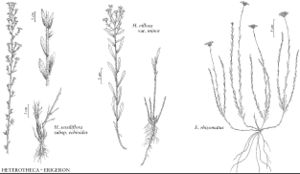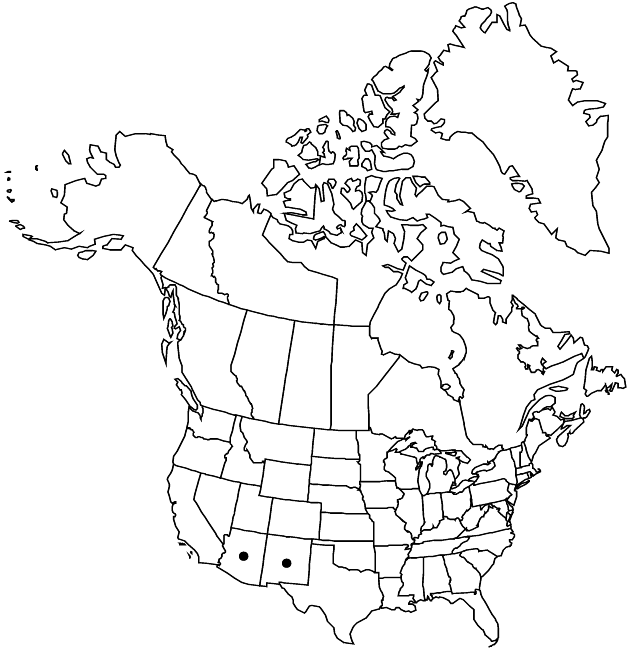Erigeron rhizomatus
Brittonia 6: 274. 1947.
Perennials, 25–45 cm; rhizomatous, fibrous-rooted, roots clustered, relatively thick (sometimes forming clumps to ca. 30 cm diam.), rhizomes or rhizomelike caudex branches creeping-ascending, slender, scale-leaved, without well-defined central axes. Stems erect, simple or 1–3-branched from near bases (secondary stems more densely leafy), sparsely strigose to strigoso-hirsutulous, sometimes sparsely minute-glandular. Leaves cauline; proximal blades narrowly oblong to oblong-oblanceolate, quickly linear, 50–100 × 1–3 mm, relatively even-sized distally, margins entire, ciliate, faces glabrous, eglandular. Heads 1 (rarely 2–3 from proximal branches). Involucres 6–7 × 13–16 mm. Phyllaries in 4–5 series, sparsely strigose, sometimes sparsely minute-glandular. Ray florets 25–45; corollas white with abaxial lilac midstripe, 6–7 mm, laminae not coiling or reflexing. Disc corollas 4.8–5.6 mm. Cypselae 3.5–4.5 mm, 5–6-nerved, faces glabrous; pappi: outer of setae, inner of 25–35 bristles. 2n = 18.
Phenology: Flowering May–Jul.
Habitat: Nearly barren detrital clay hillsides or benches, shale-derived soils (often seleniferous) of the Chinle or Baca formations, usually n- or e-facing slopes, ponderosa pine and piñon-juniper woodlands
Elevation: 2200–2400 m
Discussion
Of conservation concern.
Selected References
None.

